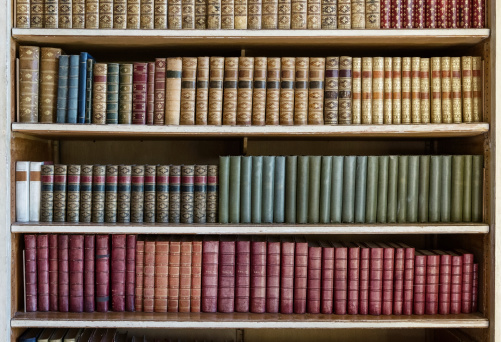 Recently, Elizabethtown College remodeled High Library’s archives to make the space safer for the rare books and other artifacts held there. In addition, the library combined collections that were housed in various locations at the College.
Recently, Elizabethtown College remodeled High Library’s archives to make the space safer for the rare books and other artifacts held there. In addition, the library combined collections that were housed in various locations at the College.
High Library, in the center of campus, is a place frequented by students and staff, alike. Students tend to spend their time in the study rooms, working alone or with peers to complete assignment and research. They also make use of libraries resources, one of which is the archives.
Rachel M. Grove Rohrbaugh has been the College’s archivist for about a year.
I am really trying to get more students and faculty involved.”
She earned her undergraduate degree in art history from the University of Delaware, then moved to Pittsburgh and began graduate work at the University of Pittsburgh for archival studies, she said. During this time she also began working in an academic library. It became evident, she said, that the organization and exploration behind archives and working in the library was something she wanted to pursue when she finalized her master’s degree in library and information science and archival studies.
When artifacts come in, Rohrbaugh initially appraises them to determine if the pieces are worthy of archiving, she said. Then, she devises a system by which she organizes the books, documents, artwork, memorabilia, depending on the category into which they falls.
After organizing and examining the artifacts, she then works to preserve them, she said. That could mean storage in the new climate-controlled area or by digital preservation– scanning the artifacts onto a computer so they can be easily accessed online.
The new archival area at High Library was made climate controlled to help preserve the artifacts, Rohrbaugh noted. Additional easy-to-move shelving also was added. Along with maintenance of the archives, Rohrbaugh also works at the reference desk to help students with questions. She said she also writes grants and is always looking for funding opportunities to continue to update the archives.
When students come to use the archives she is there to field questions and aid them in the process of finding what they need, she said. “I am completely open to helping do research in the archives, and I would be more than happy to give a tour to anyone who is curious,” she said. “I am really trying to get more students and faculty involved.” She goes out to first-year seminar classes and teaches them about the archives and how to use them.
A goal for this academic year, she said, is to inform more students about the archives and get more of them digitized, which has been a main focus along with creating portals for easier access to specific information. Because the main merger came from the Young Center for Anabaptist and Pietist Studies collection the school created one area for all items involving the Amish, she said. Rohrbaugh is working to get funding to create a portal specific to that subject.
The archivist hopes to add to the student-group archive collection—past and present memorabilia and promotional pieces from events — she said, and is actively looking for submissions. She invites student groups to contact her with content.
In general, she said, if anyone has artifacts they think are interesting and would add to the archives, she requests submissions.

